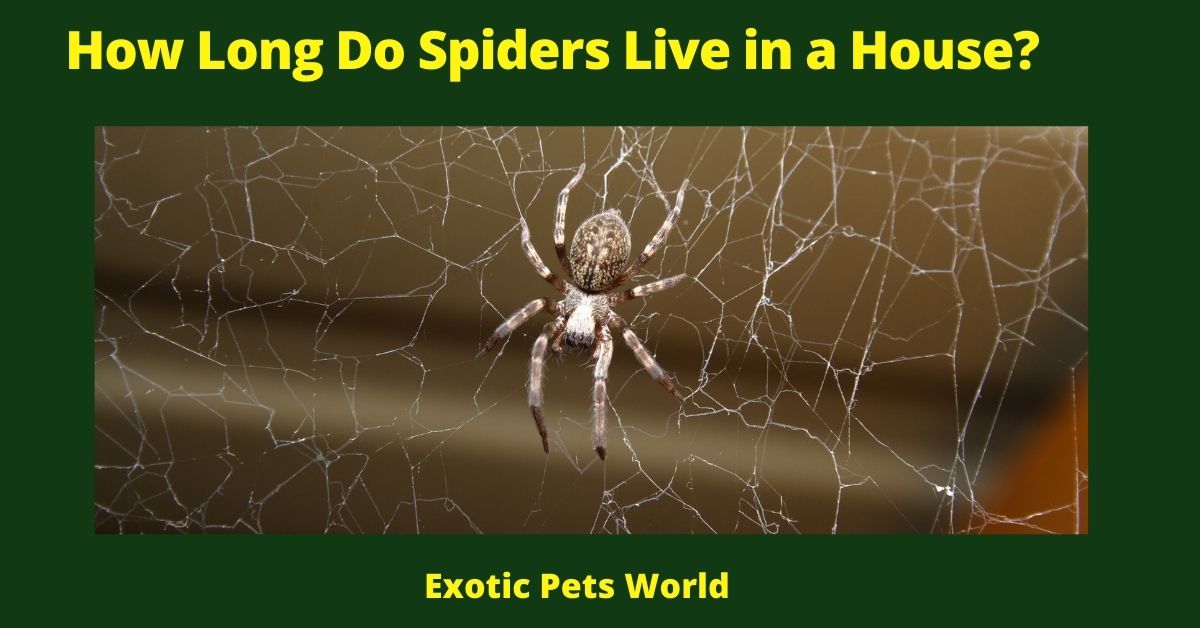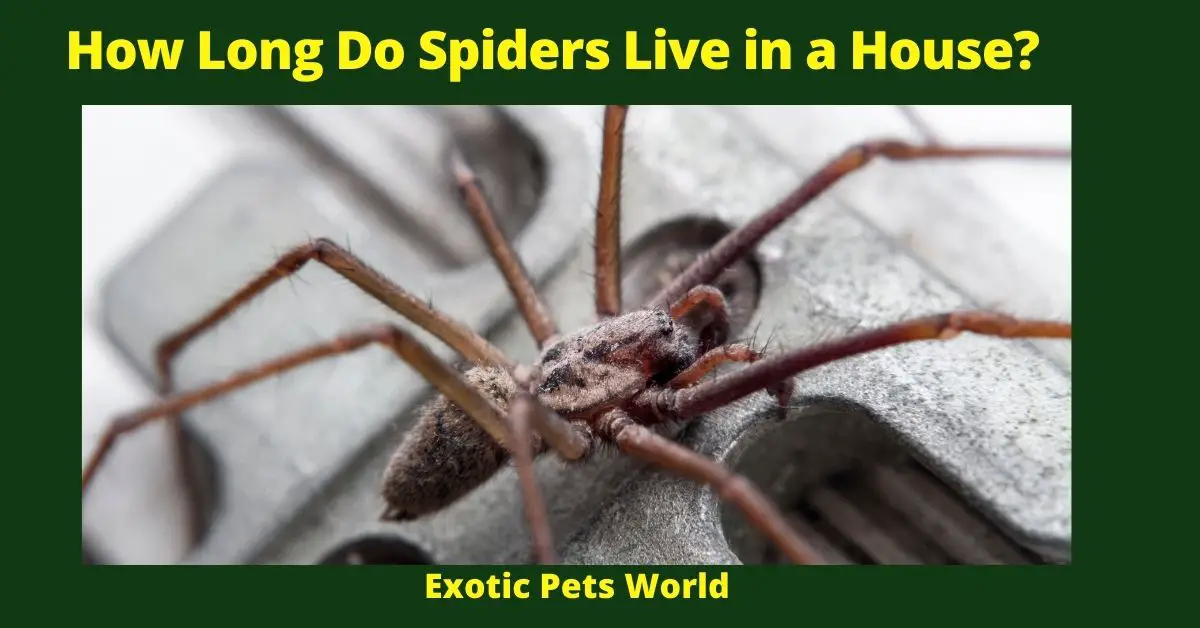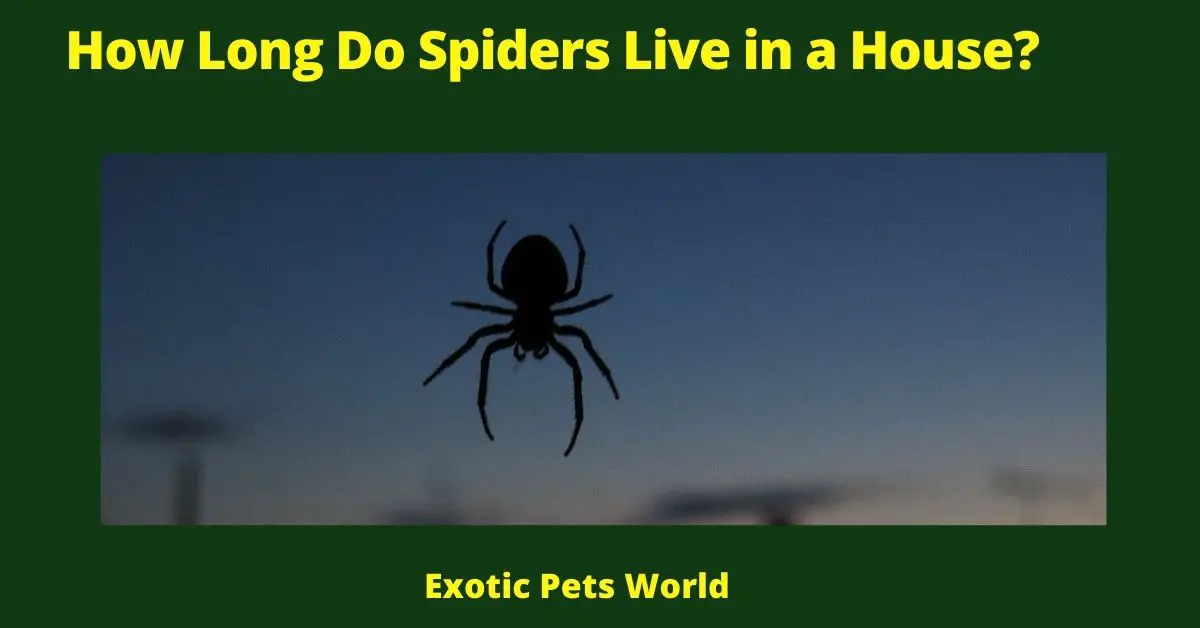House spiders are long-living animals, with some types living up to 30 years. The average life span is around one year but this varies depending on the species
How Long Do Spiders Live in a House?
Spiders are a common household pest. They can be found in crevices, corners, and dark places in your home or office. Spiders typically die within a few days to a week when they get into your house with the intention of looking for food sources. However, there have been cases where some spiders have lived up to six years with no food source!
This article discusses how long do spiders live in a house and what you should do if you find one crawling around near you.
What is The Spider Life Cycle Stages?
Eggs – Eggs can take anywhere between two weeks to six months depending on the species of tarantulas and temperature conditions they originated at during oviposition (the act of laying eggs). The number of spiderlings that hatch from each egg can range from one to hundreds, again depending on the species. Generally speaking, the larger the egg, the more spiderlings that will hatch. How Long Do Spiders Live in a House?
Spiderlings – Spiderlings are miniature replicas of their parents and look very similar in coloration but may have different markings or designs. They emerge from their eggs with fully functioning venom glands and fangs and are ready to hunt food immediately after hatching. Baby spiders will typically spin a web within hours of emerging from their eggs regardless if they live in an arboreal or terrestrial environment.
Adult Spiders – Adult tarantulas are sexually mature at their final instar or molt. Mating occurs shortly after molting and the female will lay eggs in a silk sac, waiting for them to hatch into spiderlings and continue on with life cycle stages
Habitat: Most spiders prefer living inside of warm burrows where they can hide from predators during the day. Some species including wolf spiders (Lycosidae) do not spin webs but rather hunt prey using speed as opposed to stealth like most other arachnids follow. Tarantulas live underground either in burrows dug by themselves or abandoned rodent holes that have been unoccupied for months if not years before being claimed by the inhabiting spider(s). Burrow depth usually ranges between three feet to thirty feet, depending on the species and substrate composition.

Predators: The two main predators of tarantulas are snakes and birds. Lizards may also prey on baby spiders but as adults they are generally too large for most lizards to eat. Mammals such as raccoons, opossums, skunks, and coyotes will consume adult tarantulas if given the opportunity but this is not a common occurrence in the wild.
Senescent – Aging tarantulas can be easily identified by their missing appendages, maimed abdomens from fights with other males during mating season, and overall grizzled appearance. These spiders no longer have to hide in burrows because of an increase in aggression directed towards them from larger predators due to the fact that they are smaller than most adults but still large enough for mammals or birds to consume as a meal.
Mature Spiders – Tarantula species generally live between five years (ancient goliath bird eater) and twenty-five years (rosy reds). Due to gigantism some ancient Goliaths may even reach 30+ years if they survive long enough! There has been cases where specimen have lived over 40+ years old
The spider life cycle can be broken down into four stages: egg, spiderling, juvenile/adult, and senescent. Eggs are laid by the female and hatch into spiderlings which go through several molts before becoming juveniles/adults. Juveniles reach sexual maturity and reproduce before finally slowing down and becoming senescent.
How Long Can Spiders Live Without Food?
Spiders can live for a surprisingly long time without food. They may go into a dormant state where they don’t eat or drink, but they can still survive. Some spiders have been known to live for up to two years without any nourishment! So the next time you see a spider in your home.
When spiders go dormant it is called “estivation.” During estivation, the spiders’ heart rate drops, their breathing slows down and they stop eating. They can also go into a state of suspended animation where their metabolic processes are slowed down to almost zero. This allows them to survive for months or even years without food!
While most spiders can live for a long time without food, there are some exceptions. The Australian tarantula, which is one of the largest spiders in the world, can only go without food for about two weeks before it starves to death. And certain types of spiderlings (young spiders) may only be able to survive a few days without food. So if you have an infestation of baby spiders in your home, you will want to get rid of them as soon as possible!
How Long Can Spiders Live Without Water?
Spiders can survive without food for quite a while, but they will eventually die if they don’t eat. It’s been estimated that spiders can live without food for up to three months, but this varies depending on the species of spider and the climate conditions. In general, spiders tend to be more active when they’re well-fed, so going without food can make them lethargic and slow.
Spiders can survive without water for much longer than they can survive without food. It’s been estimated that spiders can live without water for up to six months, but again, this varies depending on the species of spider and the climate conditions. Most spiders get the water they need from their prey, but if there is no prey available or if there is a drought, spiders can drink from sources like puddles or rainwater.
What is the Lifespan of Common Spider Species?
Daddy LongLegs – One year.
House Spider – One to two years.
Wolf Spider – Two years.
Brown Recluse – Up to three years, but often less.
Black Widow – Females can live up to three years, males one year.
Garden Spiders – Up to two years.
Cellar Spiders – Up to two years.
Fishing spider – Two to three years.
Jumping spider – Two years.
Tarantulas – 15 years.
Orb Weavers – One to two years.
Sac spiders – One year.
Crab spiders – Two years.
A lot of factors determine how long a particular spider will be able to survive including gender (in the case of black widows), seasonality, climate conditions, food availability, and territorial disputes with other insects/animals such as birds and lizards among others.
How Long do Wild Spiders Live?
In the wild there are many factors that affect spider lifespan:
- Egg Hatching Survival – how long do spider eggs take to hatch in the wild?
- Spiderling Survival – how many spiders survive past their first days and weeks in nature.
- Adult Spider Mortality – what kills most adult spiders in the wild, predators or starvation.
- Environment – how harsh or favorable is the environment where spiders live.
- Predators – what eats spiders in the wild.
- Immunity – do spiders have defenses against environmental hazards like UV radiation, fungal infections, and chemical exposure?
- Spider Reproduction Rate: The more time a female spider spends laying eggs (spiderlings) instead of feeding, the shorter her lifespan will be. Female wolves use their silk to protect themselves from predators while they are vulnerable during egg production & oviposition (egg-laying). This can extend Spiders’ Lives significantly because it allows them to move around without worrying that something is going to eat them or accidentally step on them. If you find an adult wolf spider in your home then you know there is at least one nearby offspring who has already hatched out into adulthood!
- Food Availability – if food supplies are low in the environment adult spiders can go into a state called hibernation. In this state, they stop eating and lose half their body weight before going out to search for more prey again. They may even die of starvation but if there is an abundance of other things to eat then this will not happen because it takes time to replenish lost energy stores (body fat).
How Long do Spiders Stay in One Place?
Spiders will stay in place throughout their life cycle if:
• They are able to catch food on their web.
• There is a sufficient amount of prey around them.
• The climate is favorable for survival and reproduction (food, water).
Otherwise, spiders will move around to find better living conditions. For example, if the web is destroyed or if there is no food available, they will relocate. Some young spiders may also disperse in order to find a new place to live. Migration can take place during any stage of the spider’s life cycle – egg, larva, nymph, or adult.
The distance a spider travels depends on its species and life stage. Juvenile spiders often wander farther than adults because they are looking for a permanent home. Some long-distance migrants can travel up to several kilometers! However, most spiders only migrate short distances (a few meters to a few hundred meters).

How Long do small House Spiders Live?
In the wild they live up to three years, but in captivity even more. Some have been known to survive for over 20 years if given adequate care.
Final Thoughts – How Long Do Spiders Live in a House?
In summary, spiders will live a short time in your home. The larger the house, the longer they have to hunt for food and find mates before migrating out of your property. Smaller homes with little activity inside are less likely to attract them because their chances of survival are lower than if there is more prey around.
A female wolf spider may lay hundreds or thousands of eggs during her lifetime so even though she doesn’t stay long you shouldn’t be alarmed about finding one living in your home! It also means that at least some offspring will survive as well since predation on neonates (baby spiders) from other arthropods like beetles, ants & earwigs is common.

Thanks for sharing. I read many of your blog posts, cool, your blog is very good.